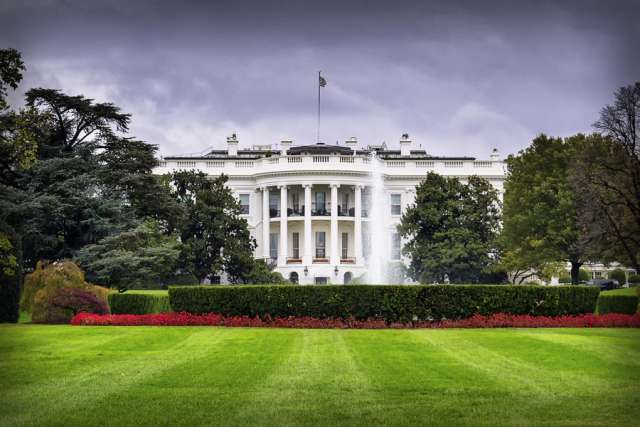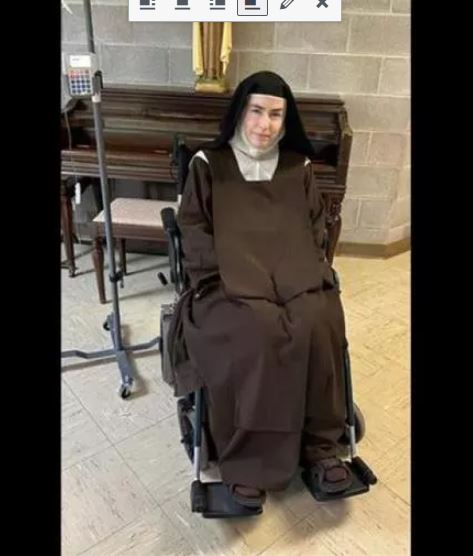By Adelaide Mena, CNA/EWTN News, Oct 9, 2017
– Two sets of announcements by the Department of Justice and the Department of Health and Human Services issued Friday both promise to broaden religious freedom protections in the United States.
The first announcement, by the HHS department, broadens the religious freedom exemptions to the department’s contraception mandate, which has been facing federal lawsuits from conscientious objectors since its introduction in 2011.
The second announcement was a memo issued by the Department of Justice, in which Attorney General Jeff Sessions explained in a detailed twenty-point memo, the legal principles all government agencies should consider when dealing with religious freedom concerns.
Neither announcement will automatically resolve religious freedom cases currently within the court system.
In an Oct. 6 interview with CNA, Robert George, a professor of constitutional law at Princeton University and visiting professor at Harvard University, explained the implications of these two announcements for religious freedom supporters throughout the country.
According to the administration this has been a pretty big day for religious freedom. Can you provide a general reaction and walk us through an overview of what the new HHS mandate adjustment and DOJ rules mean for religious freedom?
Well I think this is a big day for religious freedom. I see much greater value in the guidance that been issued today than in the executive order on religious freedom from a few months ago, which I was very disappointed in, as you know. I felt that order was essentially meaningless. The guidance today I think is genuine and I think it is very likely to make a positive difference. The administration goes clearly on the record and instructs all relevant agencies of government that the [Religious] Freedom Restoration Act applies even where a religious assurance seeks an exemption from a requirement that the entity confer benefits on third parties.
This is point 15 of the 20 key principles for Religious Liberty issued by the Justice Department.
And this is a big point in dispute between the two sides in this debate over religious freedom. And the administration comes down squarely in favor of what I certainly believe is the correct view.
Another key point that the guidance makes clear in point 19 is that religious employers are entitled to employ only persons whose beliefs and conduct are consistent with the employer’s religious precepts. Now I interpret that to mean that an employer may, if the religious employer chooses, for religious reasons choose to employ only members of its own faith. But it also means that the employer, if it chooses on the basis of its religious faith, can choose to hire people who are not of the same faith, but limit those employment opportunities to prospective employees whose conduct is in line with the moral teachings of the faith. Now this is very important. It means for example that a Catholic school could say, “We don’t insist on hiring only Catholics to be teachers in the school. Perhaps we insist on Catholics as teachers of religion, since it’s a Catholic school. We are perfectly happy to hire a math teacher, social studies teacher, and literature teacher who are Hindu or Protestant or Jewish or Mormon or Muslim.”
But, even if they choose to do that [a Catholic employer] can choose to employ only people from their own faith or other faiths who live their lives in line with Catholic moral teaching. So if for example the school says, “We do not want to employ people who are living in a cohabiting partnership outside of marriage,” under this guidance, under point 19 as I interpret it, the employer is entitled to do that, and that’s protected as a matter of the employer’s religious freedom. This is a very important point.
You know, I do have a question about point 20 that has to do with the first word and the point – that what is “generally.” The point says, “generally, the federal government may not condition federal grants or contracts on the religious organization altering its religious character beliefs or activities.” What I don’t know is what the exceptions are. I assume “generally” is meant to state a rule, but to contemplate that there are exceptions to the rule. So I think we need clearer guidance from the administration and from the Justice Department about the conditions under which the federal government may legitimately condition federal grants or contracts on their religious organization altering its religious character beliefs or activities. Since it’s presented as a conditional norm not as an absolute norm we really need some clarity about what the conditions are, or what the exceptions are. And I cannot find that clarity in in the material released today. But I do think we need it.
I’m glad you brought up the Executive Order and its shortcomings. Could you briefly explain what your concerns with the order were, for those who are unfamiliar?
There was very little in the March executive order that was actually operative in such a way as to protect everybody’s religious freedom.
To the extent that there was much operative, it had mainly to do with the interpretation and application of the Johnson Amendment, which forbids political advocacy of certain sorts by churches.
I said at the time that the Johnson Amendment, while problematic both constitutionally and as a policy matter, was not among the top 20 items on a list of genuine concerns about religious freedom. It’s very rarely, if ever, enforced. It does have something of a chilling effect which is why would like to get rid of it. But, to those who have not been chilled by it, have by and large been left unmolested by the government. So it was not a problem in desperate need of fixing.
There were a lot of other things like the protection of employers against being forced to hire people who were in same-sex partnerships, for example, where the employers faith judged those kinds of partnerships to be immoral, or other sorts of sexual partnerships – perhaps co-habiting opposite sex partners without benefit of marriage.
That was nothing in there to protect employers in those domains. So, what what we see today goes in the right direction on a number of those issues, including you know those two areas – points 15 and 19 – that I already called attention to.
Now I know that the preparatory materials for the guidance points, says that this guidance does not resolve any specific cases. It offers guidance on existing protections in religious liberty and federal law.
Of course there are cases that are pending. So the proof will be in the pudding. We need to know whether those government officials – including those in charge of litigation matters who have cases pending that jeopardize the life of religious employers. We need to know whether they will interpret these guidance points in ways that will cause them to relent in attempting to limit the freedom of those employers. I certainly hope that they will, but this is by its own terms, this guidance does not dictate to any official that he or she resolved a specific case in a particular way. It says that it doesn’t do that. It says, “this guidance does not resolve any specific cases.”
So since that’s true, we’ll need to know how officials interpret the guidance and apply the guidance to specific cases. That will be the proof. That will be the proof in the pudding.
We’ll see whether these cases are resolved in ways that are respectful of religious freedom, or whether these guidance points are treated as if they’re meaningless and officials carry on with cases in the way that some have been carrying on with these cases: in ways that limit the religious freedom, or attempt to limit the religious freedom, of these employees.
There’s some important points that have been well-established, but it’s good to have them reiterated since they remain controversial. Point three is an example of that: the freedom of religion extends to persons and organizations. There’s there’s a view that’s been circulated by people who are in truth enemies of religious freedom, although they would not admit to being that – but they are.
There’s a view that says religious freedom rights extend only to individual persons and not to organizations like churches, schools, religiously based social service providers, and so forth. This guidance in point three makes very clear that this administration’s position is that freedom of religion extends to religious organizations and not just individuals, so that’s good. It’s not new, but it’s good.
Switching gears to the changes to the HHS mandate: how does this adjustment impact the longstanding battle over mandate we’ve been seeing for the past six years?
Of course, your best source of your best source of information on that is the Becket Fund for Religious Freedom. I would certainly myself defer to what the lawyers there said because it’s their case and they have been completely on top of this, and they’re excellent lawyers. As you know I’m a member of the board of the Becket Fund, and a member of what’s called the Corporation of the Becket Fund as well.
I think our lawyers have done a fantastic job in these cases including Little Sisters of the Poor case, so I would really defer to their judgement.
I will say this though: I believe an authentic, faithful, honest interpretation of these guidelines by the government officials who have responsibility for that litigation would it cause them to basically concede to the Little Sisters, and to acknowledge that to the extent that the regulations purport to impose upon religious organizations a requirement that they provide, or in any way to implicate themselves in providing contraceptives or abortifacient efficient drugs in violation of religious teaching, that the government would simply concede the government has no right to do that. The regulations cannot be enforced against those religious entities. But again, the proof will be in the pudding.
We’ll see whether the public officials to whom this guidance is addressed apply the guidance in that way. That’s the point again about the guidance itself not resolving specific cases. So we’ll see.
There’s other point that’s worth making, just to step back from all this for a while.
Even as late as the middle 1960s there were still jurisdictions – including Massachusetts and Connecticut – that prohibited the sale, distribution, and even use of contraceptives. Those were longstanding laws put on the books by Protestant majorities in the 19th century to protect public morality.
The reason that efforts to repeal those laws consistently failed in the legislatures of Connecticut in Massachusetts and some other states, although they succeeded in some states, the reason they failed in other states is that some of the legislatures felt that the widespread availability of contraception would would weaken the public morality and open the floodgates to promiscuity, adultery, divorce, family abandonment, and all the things that comes in the wake of a collapse of sexual morality. The Supreme Court struck down the anti-contraception laws in 1965 in the case of Griswold v. Connecticut and in 1972 in the case of Eisenstaedt v. Baird and they did that at the request of liberals who insisted that contraception was a deeply private matter in which the public had no right to intrude.
The Supreme Court found a so-called right to privacy, according to the justice system the right to use contraception, because it was a private matter. One cannot help but notice how liberals have changed their tune. They no longer regard contraception as a private matter: once they broke down the laws against contraception on the grounds that it was an allegedly private matter, they suddenly shifted back to treating it as such a public matter that they’re going to force people in general to pay for other people’s private contraception. They’re even willing to force religious conscientious objectors like the Green family and Hobby Lobby and a Little Sisters of the Poor to make themselves complicit in one way or another in providing other people’s allegedly private contraceptives.
So, one cannot help but perceive a rather huge dollop of hypocrisy in the way the contraception issue has been treated by the progressive movement to from the middle 1960s to the middle 2010s.
If it’s private, leave it private. If it’s not private, then they had no business asking the Supreme Court to strike down laws prohibiting it in the name of a putative right to privacy.
They really should make up their minds whether it’s private or not private.
Another change is that the mandate now protects those with non-sectarian conscience objections to the mandate. Can you speak to the importance of this expansion for those who object to these issues for non-religious reasons?
Yes. Many people do not derive their moral convictions from a religion, and many religious people believe that even apart from divine revelation there are moral truths that can be known by the disciplined application of reason even apart from what might, in addition, be known by religious authority by virtue of the teaching of a church or a body of scripture or what have you.
In both cases it’s sometimes described as natural law.
It appears that in this guidance, it’s acknowledged that conscience formed on the basis of non religiously based, or not necessarily religiously based, on a moral reflection deserves conscience protection in the same way that religiously based moral convictions deserve conscience protection.
Back to the DOJ update … Can you comment on the DOJ guidance on how to address all religious freedom objections. What other cases or situations can this apply to outside of the contraceptive mandate or providing potentially abortifacient procedures? What are some of the other kinds of cases that the DOJ guidance might impact?
Yes, I mean I knew one thing would be in those states that have moved to assisted suicide, I think the guidance system provides some promise of protecting religiously based health care-providing institutions like Catholic hospitals or other religiously affiliated medical institutions from being forced to participate in assisted suicide or, for that matter, in abortion. The same with individuals as well as institutions: doctors in state facilities for example who cannot in conscience participate in assisted suicide or abortion in places like Oregon that have taken the step of embracing assisted suicide.
It could be that if there are some states or municipalities that move in the direction of banning male infant circumcision – there’s a movement that strongly is pushing for bans on male infant circumcision– the movement is called the intactivist movement– if such laws are adopted I think that this would strengthen hands of Jewish organizations and Muslim organizations that will seek to preserve the right on a religious basis to have their male infant children circumcised. We’ve seen this in Europe: some some jurisdictions in Europe have banned male infant circumcision and their movement is alive here in the United States. One can easily imagine certain jurisdictions, certain municipalities, maybe a state, banning circumcision, so it could become important in that area.
These protections will protect not only Catholics and other Christians, but members of non-Christian faiths as well.
What else should our readers know about these two religious freedom updates?
Probably the most important thing to remind people in closing is that the principles are designed to guide public officials but, they don’t dictate results. The same is true of the Religious Freedom Restoration Act, by the way. It simply gives the religious claimant today in court and requires that the government prove that its imposition on a religious claimant is supported by a compelling state interest and represents the least restrictive or least intrusive means of prosecuting that interest. It doesn’t dictate the result.
So while I welcome and I think all friends of religious liberty and of conscience should welcome this guidance, we need to hold off cheering until we see how the guidance is actually interpreted and applied by public officials. It’s when we see actual cases being resolved – whether those cases are in litigation or whether their decisions about whether to bring a case or how to bring a case – until we see actual cases. Until we see the guidance actually applied to concrete disputes we won’t know whether to cheer. So what that tells us is there’s a human element. Rules don’t apply or interpret themselves. Human beings interpret and apply rules. So we need to see the human beings in the bureaucracy interpreting and applying the rules and then we’ll see whether there’s anything worth cheering about here.
But I think if these principles are faithfully and authentically interpreted, it will mean a very desirable set of protections for religious freedom. Protections that are now many years overdue due to the assaults on religious freedom during the Obama administration.





 Washington D.C
Washington D.C

